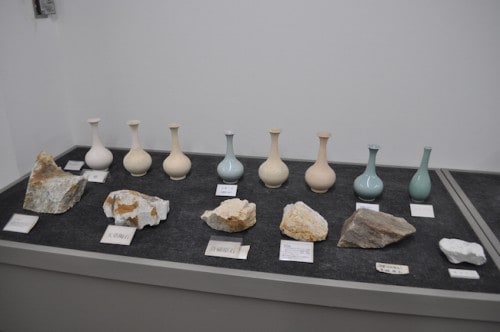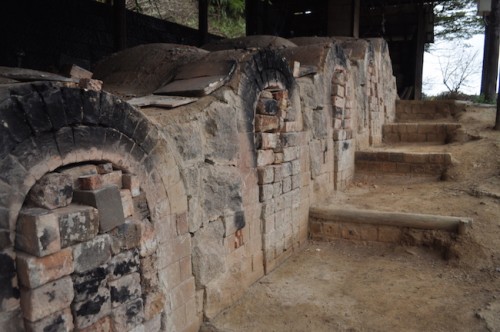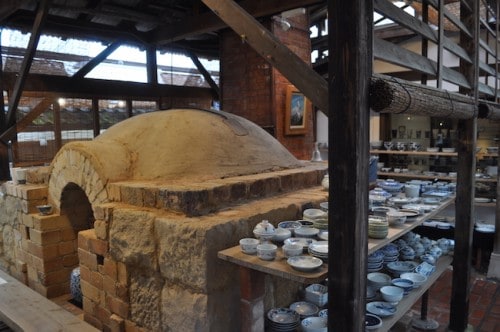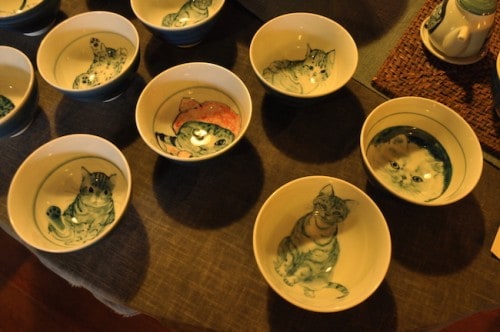Sponsored by Saga Prefectural Tourism Federation
Saga prefecture in Kyushu is famous for a few different kinds of pottery styles. One of the most well-known is Imari-yaki from the areas of Imari and Arita. While yaki generally means “fired,” or in pottery’s case, translating to “ware,” there are a few different names that this area’s style of pottery goes by. Some call it Imari-Arita yaki while others just refer to it as imari-yaki. The Izumiyama Mountain in Arita was found to be rich in porcelain stone, making the areas of Arita and Imari ideal for the pottery work.

Imari’s pottery is very distinct and unique in comparison to other pottery created in Japan. The designs often have Chinese and Korean influences, with three main types being Koimari, Kakiemon, and Nabeshima. Many of the potters who were sanctioned by Hideyoshi Toyotomi and other lords to create the pottery were brought over from Korea nearly 400 years ago. The work they and their predecessors created were popular for export to the West, ending in homes of the aristocrats in Germany and other European nations. Imari-yaki is also quite pricey, due to its historical significance and status as pottery made for royals domestically and internationally.

Even if you cannot afford to buy or carry back Imari-yaki, a visit to the birthplace of the pottery ware is quite exquisite on its own. The village of Ookawachiyama sits high above ground, surrounded by luscious green mountains. This village is more commonly referred to as Imari-yaki Pottery Village, and here, visitors can check out dozens of kilns, pottery shops, and enjoy walks through the tranquil village and forestry that’s all heavily dressed with its own imari-yaki ceramics.
Start your visit at the Imari and Arita-yaki Traditional Industry Center!
The free museum is at the foot of the village where the bus stop and parking are both conveniently located. This is a great place to start your visit to pick up the area map, get any help you need, and to get a glimpse at some of the pottery on display. If you have time (and if there are slots available), you can also sign up for a pottery-making class. Many of the pottery on display are done by famous potters, and some others are very historical artifacts. The museum is not big at all; only two rooms are filled with displays.

Check out the kilns up close!
After you’ve gotten an introductory look at the pottery in the museum, follow the trails on the map to whichever direction you’d like! As you walk closer to the mountainside, you’ll see many traditional kilns that are still used today, like the ones below.
However, these aren’t the only types of kilns around. Kamamoto, craft factories, in town also serve as pottery stores and open places for visitors to see how the pottery is made. Below is one of the many stores, which has a replicated kiln in the store. Inside of the old kiln now acts as a little shrine and place for prayer and gifts for the gods.
Not all designs in the imari-yaki style come in pottery ware. Here, a design is painted on a shell.
There are little details every step of the way
Japan is a country that is highly attentive to little details…and this village is another place where you will find the most unexpected details to the pottery ware. From street signs to restroom sinks. You’ll never know where you’ll come across imari-yaki, so why not make a little game out of it? It could be a fun way to discover your way through the walk-able village.
Take a walk through the forest to discover more pottery…and great views!
The damp weather on the day I visited made for an exceptionally quiet and serene walk through the woods. After climbing up a handful of stairs, I stumbled upon the top of the village, a park with a structure that looks like it was constructed right out of a postmodern painting.
 I couldn’t find out about the history for the structures below, but any speckle of color you see in the images are made out of imari-yaki that have been broken to pieces. The structures have been constructed by putting together the broken parts to make new designs and color patterns. From the looks of the structures, they must be around for almost half a century.
I couldn’t find out about the history for the structures below, but any speckle of color you see in the images are made out of imari-yaki that have been broken to pieces. The structures have been constructed by putting together the broken parts to make new designs and color patterns. From the looks of the structures, they must be around for almost half a century.
 Ookawachiyama pottery park: an unforgettable blend of historical Japan and Postmodern architecture
Ookawachiyama pottery park: an unforgettable blend of historical Japan and Postmodern architecture
After following along the trails in the mountains, you’ll come across some benches where you can rest your tired feet and look out at the village itself. Though some tree branches were in the way, I figure the view is still nicer than in the summer when the leaves are full, and looking out over the greenery could be a bit more difficult.

The famous imari-yaki bridge
The trails brought me back down towards the center of the village, past more kilns, and back out into the main parking lot. Essentially, the village can be enjoyed in a large loop. At the foot of the village, I crossed the famous imari-yaki infused bridge and entered another park.
This side of the village also has a very noteworthy graveyard, where the original Korean potters rest. Be careful on the step and uneven walk up to the tombstones. It was slippery the day I visited due the the rain the day before. The graveyard doesn’t seem to get visited quite too often from the looks of the trails. Unlike most traditional Japanese tombs where the family rests together, the grave site dedicated to the Korean potters rest together in a shape of a pyramid. However, in the background you see regular Japanese tombs. It makes one wonder about the backstory to the differences.
One last visit was on the walk back to the bus stop from the graveyard. I came across a pond where koi fish swam, and a big waterfall occurred every time one of the bamboo boats overflowed with water. I was admiring a tower with imari-yaki pottery on it, when they suddenly started making noises. No, not just any noise, it was a beautiful melody sun by the sound of bells. I peaked inside the pottery to find they were automated bells. In fact, they were little chimes. It was beautiful.
On the same walk by the graveyard, I came across the ground full of these white ceramic pits. These are found all around the village. They are the pits that are formed at the bottom of the imari-yaki pottery. Instead of throwing them out as total waste, they are used in the village to cover the ground, and some are sold or gifted with beautiful drawings painted on them.
Enjoy nontraditional designs on imari-yaki, too!
Finally, I can’t help but to share with you some beautiful nontraditional pottery designs I came across. There is a whole pottery store towards the bottom of the village that is solely dedicated to nontraditional imari-yaki with images of cats on them. The sweet lady who runs the pottery shop and kiln will pour guests tea and chat about the pottery ware. It’s worth a visit, and it’s right along the path to Imaritei, the famous Imari beef restaurant that I introduced.
Need Help? Contact the Saga Travel Call Center
24/7 Assistance available in English, French, German, Italian, Spanish, Portuguese,Russian,Thai, Korean, Chinese (Mandarin & Cantonese), Vietnamese and Indonesian!!










































No Comments yet!